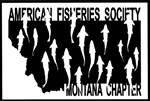Loading...
Abstract
The UCFR headwaters suffer from mining legacy impacts and also nutrient enrichment caused by land use and other natural features of the watershed. These impacts historically led to a major decline in riverine integrity. The Montana EPSCOR-CREWS project has as one of its main objectives to determine how heavy metals contamination, coupled with nutrient enrichment alter aquatic ecosystems, acting as subsidies and stressors in the UCFR. The form and size of the metals in question can determine the propensity for uptake by primary producers and transfer to higher trophic levels. Through its influences on primary production, nutrient enrichment can exacerbate contaminant effects via increased resource availability during algal blooms or diminish such effects by distributing contaminants more broadly within autotrophic biomass. The timing and location of algal blooms might affect the quality and availability of basal resources that modulate the transfer of pollutants to higher trophic levels. Lastly, the health of the fish communities in the river might not only be affected by trophic interactions and metal concentrations, but also by habitat availability and other important features of the system also currently impaired by human activities. Here we showcase the ongoing multidisciplinary efforts to disentangle the effects of these multiple stressors and provide information to restoration efforts and stakeholders in the UCFR.
Start Date
2-3-2021 10:30 AM
End Date
2-3-2021 10:45 AM
Document Type
Video
Feijo de Lima presentation: video transcript
Disentangling the impacts of multiple stressors in the Upper Clark Fork food webs
The UCFR headwaters suffer from mining legacy impacts and also nutrient enrichment caused by land use and other natural features of the watershed. These impacts historically led to a major decline in riverine integrity. The Montana EPSCOR-CREWS project has as one of its main objectives to determine how heavy metals contamination, coupled with nutrient enrichment alter aquatic ecosystems, acting as subsidies and stressors in the UCFR. The form and size of the metals in question can determine the propensity for uptake by primary producers and transfer to higher trophic levels. Through its influences on primary production, nutrient enrichment can exacerbate contaminant effects via increased resource availability during algal blooms or diminish such effects by distributing contaminants more broadly within autotrophic biomass. The timing and location of algal blooms might affect the quality and availability of basal resources that modulate the transfer of pollutants to higher trophic levels. Lastly, the health of the fish communities in the river might not only be affected by trophic interactions and metal concentrations, but also by habitat availability and other important features of the system also currently impaired by human activities. Here we showcase the ongoing multidisciplinary efforts to disentangle the effects of these multiple stressors and provide information to restoration efforts and stakeholders in the UCFR.
